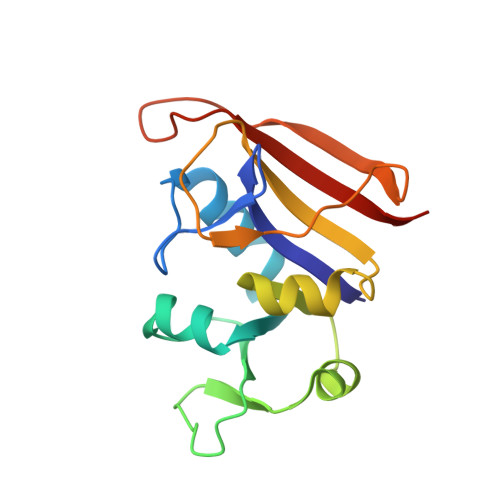Charged Propargyl-Linked Antifolates Reveal Mechanisms of Antifolate Resistance and Inhibit Trimethoprim-Resistant MRSA Strains Possessing Clinically Relevant Mutations.
Reeve, S.M., Scocchera, E., Ferreira, J.J., G-Dayanandan, N., Keshipeddy, S., Wright, D.L., Anderson, A.C.(2016) J Med Chem 59: 6493-6500
- PubMed: 27308944
- DOI: https://doi.org/10.1021/acs.jmedchem.6b00688
- Primary Citation of Related Structures:
5ISP, 5ISQ, 5IST - PubMed Abstract:
Drug-resistant enzymes must balance catalytic function with inhibitor destabilization to provide a fitness advantage. This sensitive balance, often involving very subtle structural changes, must be achieved through a selection process involving a minimal number of eligible point mutations. As part of a program to design propargyl-linked antifolates (PLAs) against trimethoprim-resistant dihydrofolate reductase (DHFR) from Staphylococcus aureus, we have conducted a thorough study of several clinically observed chromosomal mutations in the enzyme at the cellular, biochemical, and structural levels. Through this work, we have identified a promising lead series that displays significantly greater activity against these mutant enzymes and strains than TMP. The best inhibitors have enzyme inhibition and MIC values near or below that of trimethoprim against wild-type S. aureus. Moreover, these studies employ a series of crystal structures of several mutant enzymes bound to the same inhibitor; analysis of the structures reveals a more detailed molecular understanding of drug resistance in this important enzyme.
Organizational Affiliation:
Department of Pharmaceutical Sciences, University of Connecticut , 69 North Eagleville Road, Storrs, Connecticut 06269, United States.

















